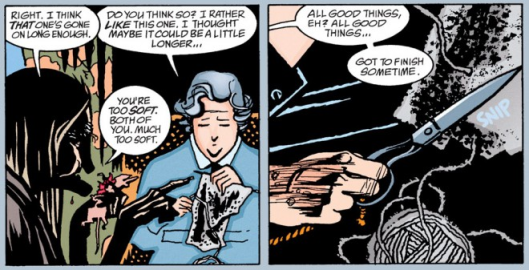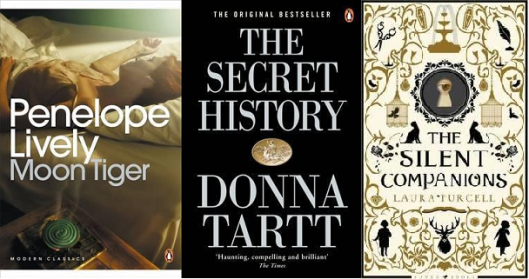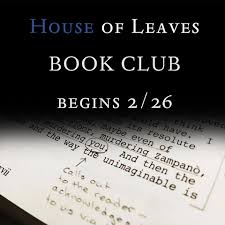
It is March 1st – which means I get to mark World Book Day from a busy cafe in a shopping mall, after having travelled 40 minutes (there and back) to work only to find out it is a ‘snow day’ and therefore the site is shut.
I am currently drowning the last embers of my rage in my chai latte and top it off with a blueberry muffin, which quite frankly, I think I bloody well deserve after battling with Storm Emma’s offering on my car this morning. But hey-ho, can’t complain. I get to sit across the way from a Scouse handyman who is commiserating about his personal life to his mate and just eavesdrop (because that is what reader/writers do – we are very Parisian in that fashion).
This is the perfect time and place to write another blog post. Go me.
So, WBD is celebrated all day by reading books, talking about books, writing about books, and that is exactly what this is. MZD, the prodigal author of House of Leaves, began his online book club which looks at one section of this massive genre-defying tome at a time, and we all get to basically go nuts over inferring the shit out of it.
My observations so far of the group talk on the House of Leaves FB Book Club Page is as follows:
- Every person has a different edition (full colour, black and white mostly) which means people are now sharing pictures of the inner sleeve that others do not have. There is a lot of camaraderie going on! And I have unearthed some pretty neat connections I never had the chance of learning about 10 years ago, because of the limitations on internet chat rooms and forums (remember those? Yeah, still miss ’em).
- It is all one MASSIVE GEEK PARTY! I mean, there is one lady who literally got paranoid over a splodge of blue ink on the title page (if you know the book, blue is a significant colour. All references to the HOUSE are in blue.) It was reading into stuff, gone mad. I have come to the conclusion that there is such a thing as too much interpretation, and that can ruin a beautiful thing like HoL. Turns out, MZD even gets exasperated at how deeply and seriously some people may lose themselves in HoL.
- The conversations are attracting not only the academically minded, but also complete newbies who are entering the horrific alchemy of the novel and realising that YES, this book CAN give you nightmares. A word of warning to those beginning it: make sure you read it during the day, not in your house, and you have someone around to have a light-hearted conversation afterwards. DO NOT READ AT NIGHT. You have been warned. I have personally experienced the horrors of that.
- It can be a bit confusing, but that is the nature of the novel and the way ideas unspool from it. When you have a piece of work that has been constructed like a daisy-chain from other pieces of literature and literature that doesn’t even exist, but is given the illusion it is a credible piece of evidence, then people begin to echo that in their own surmisings. It is completely a meta-experience. We are the book, the book is us. Simple as.
What ‘Genre’ is House of Leaves?
This is my second read through of HoL, which means I’ll be approaching it from a completely different perspective. When I first read it, I didn’t really get what I was experiencing. Yes, it was a very unique experience as the book is laid out differently from other texts. It is a story about a labyrinth, that grows in a house in Ash Tree Lane, and the text is labyrinthine to mimic that.
A labyrinth, as everyone knows, is designed to throw you off, make you lose your bearings, your sense of ‘self’, induce a sense of panic etc until you ‘work’ to find out the exit. This is what I mean by the ‘structure’ of the book mimicking the content of the book:

The text will not obey the laws of literature as we know it. Text will flow backwards, go sideways, be cut off, slide down the page, even be ‘caged’ in a box, which here is symbolising how one of the characters feels as he crawls through one of the ever shifting spaces in the labyrinth.
As for what ergodic means:
“The ergodic work of art is one that in a material sense includes the rules for its own use, a work that has certain requirements built in that automatically distinguishes between successful and unsuccessful users.”
It also needs to be something that requires the reader to interact with the text, (which the book club members are doing, they are digging up meanings, joining up the dots, making new connections and using the ‘interface’ that MZD created.) This book does not come with a manual on how to read it – you need to figure out what is needed to crack it:
“In ergodic literature, nontrivial effort is required to allow the reader to traverse the text. If ergodic literature is to make sense as a concept, there must also be nonergodic literature, where the effort to traverse the text is trivial, with no extranoematic responsibilities placed on the reader except (for example) eye movement and the periodic or arbitrary turning of pages.”
So basically moving your eyes from right to left is not going to get you anywhere with HoL.
Apart from this, HoL is grossly intertextual – to the point where we can say that it doesn’t stay anchored to any one ideology, theme or genre. It passes fluently and fluidly from one to the next at will. In fact, you have control over what those connections are. The suggestions are there, only you have to make the links (if you wish).
So, let’s introduce ourselves to the notion of HYPERTEXT:
Hypertext fiction is characterized by networked nodes of text making up a fictional story. There are often several options in each node that directs where the reader can go next. Unlike traditional fiction, the reader is not constrained by reading the fiction from start to end, depending on the choices they make. In this sense, it is similar to an encyclopaedia, with the reader reading a node and then choosing a link to follow.
HoL, despite proclaiming itself to be a ‘novel’ is actually more of a manual of sorts, an academic paper, that gets lost in the throes of its own urban mythology. It desperately tries to anchor itself in reality. We have at least 3 narrators for starters: Zampano (a blind man who to me resembles Jorges Luis Borges more than anything (more on this for next week!), Johnny Truant (a young drug-addled failing tattoo artist who picks up the mantle of Zampano after he dies, whose voice is a footnote in the margins of the book) and Navidson (a man who may or may not have existed, who moved into a haunted house, that grew a labyrinth one day that was physically impossible according to some shaky home videos). In fact, here is one person’s very useful diagram of how many ‘narrative layers’ one experiences when reading this book:

Can you say ‘unreliable narrator’? Um, yep. So paranoia when reading this novel is inevitable. The hypertext aspect of the book comes into play as you go deeper into the story. You will find yourself breaking off, going away and delving into the story of the Minotaur for a few days, coming back, then realising that the page you are reading has a secret code embedded in it. Off you go again, figuring out what it means, you will go back several pages, pontificate on a word, a letter, a line. Repeat ad nauseam.
This aspect of hypertext is experienced more literally with MZD’s Only Revolutions, where you literally flip from the front to the back to the front of the book constantly to experience that same moment in time, from two different perspectives. It is a physical process and creates a feeling of symbiosis between the two lovers who are, interestingly, alive at two different points in history, and are travelling towards each other from opposite ends of the USA. It is the great American road novel, turned ergodic and hypertextualised (apt, since MZD’s fans had a hand in creating the novel itself).
But I digress… (as is natural for a novel like this). Let’s look at those all important words “This is not for you”.

Why does this greet the reader before the story begins? Some say it is a warning from Johnny Truant, who let’s face it, wishes he never went to Zampano’s apartment that day with his friend Lude. It is reminiscent of Milton’s “Abandon all hope, ye who enter here” which greets those at the entrance to hell. I would like to agree that it is this an nothing more, as the house is a hell to anyone who enters it and especially goes down the 5 1/2 minute hallway to the great unknown.
However others have stated that the work itself consists of personal notes, scribblings, Zampano’s obsessive writings which are reminiscent of diary entries. The man was a graphomanic and died in a place much like this:

So maybe we are NOT meant to read his things, because they are a diary of his mad thoughts. The reader is solely himself (ironic, as the man was blind – another link to Borges!)
Others have suggested that since ‘echo’ plays a big part in the core theme of the book, then maybe we should apply to myth directly, in that if this is Echo’s voice, only the last two words would chime back to us ‘for you, for you’. An interesting theory (and one of my favourites!)
Lastly, one member of the book club made a very valuable contribution about how he had once met Danielewski at a signing, and he said the following ‘I wrote this for you so you could swim in it, not for you to drown in it’. Very revealing, as yes, it is for us and for the reader. Nice to know MZD worries about us and our obsession with his creation.
So remember guys – have fun, don’t drown. From one Pisces to another, just swim with the current*.
*Just an observation but it is WBD, 1st March. That means 4 days to go for MZD’s birthday, and 6 days for mine. Check out the publisher of my edition of the book:

*sly grin* Okay, I’ll stop now… I’ll stop. Those of you who got it, have got it. Thank you. I’ll just ‘swim’ and try not to drown.







 The summer holidays have come around, and like most teachers I have aimed to get out of the country as soon as humanly possible. It’s been a grueling 10 months of secondary education – stressing over grades, dealing with poor behaviour, becoming a marking machine for the last two terms (firstly with an endless stream of year 11 PPEs followed by end of term Year 10 PPEs and assessments for other groups).
The summer holidays have come around, and like most teachers I have aimed to get out of the country as soon as humanly possible. It’s been a grueling 10 months of secondary education – stressing over grades, dealing with poor behaviour, becoming a marking machine for the last two terms (firstly with an endless stream of year 11 PPEs followed by end of term Year 10 PPEs and assessments for other groups).











